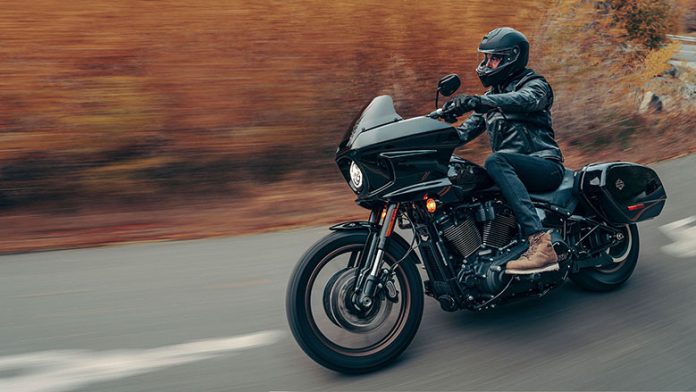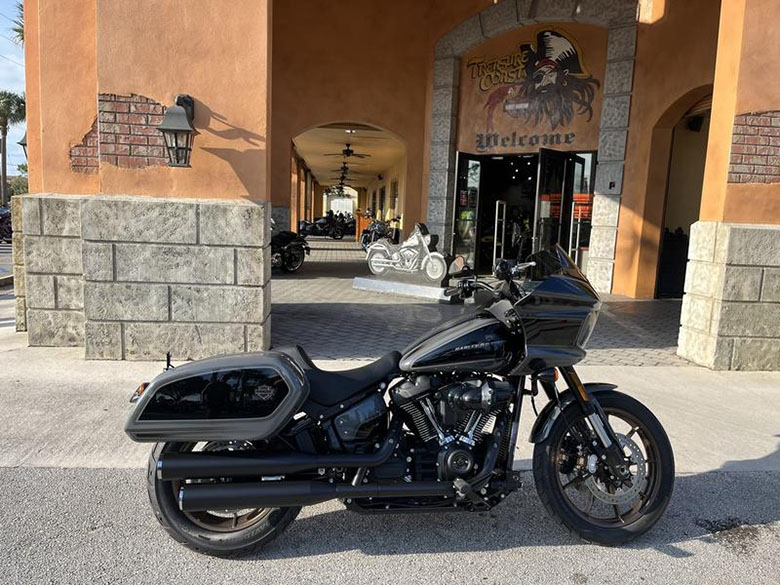With the new 2023 Harley-Davidson Low Rider ST Cruisers, Harley-Davidson has completed the historic feat of making a lot out of trim. It isn’t because there weren’t any more available; instead, there wasn’t a need for any more. The redesigned Low Rider S and a new fairing are all new about the new bike. Still, the heritage-inspired aesthetic will satisfy the desires of many FXR and Dyna lovers searching for practical, classic flair on H-D’s contemporary heavyweight base. The ST gives H-D’s hot-rod Soft ail a significant amount of flexibility without significantly reducing performance by providing more storage and wind protection.
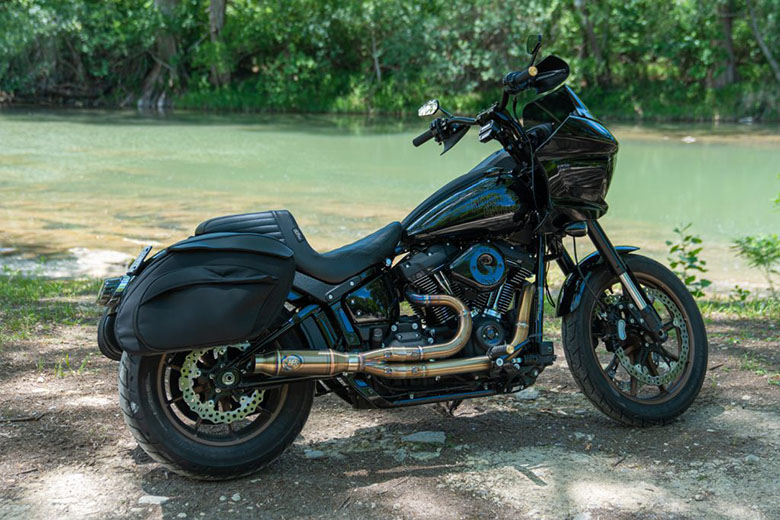
2023 Harley-Davidson Low Rider ST Cruisers – Features and Specs
Chassis
The new frame-mounted fairing, modeled after the FXRT Sport Glide, is the ST’s main attraction. The aerodynamics of this fairing were created using a computational fluid dynamics study, which is evident in its sharper creases and altered proportions when compared to the FXRT. With modest deflectors at the lower outer corners to guide wind away from riders’ knees, it is sturdy and broad enough to protect most riders. The center vent was absent from the original FXRT fairing, but it was included in the redesigned design and the side vents.
When traveling at highway speeds, my helmet did encounter some buffeting. The Harley-Davidson Overwatch Handlebar Bag I put to plug the center vent significantly decreased the turbulence although the three massive vents on the fairing are not retractable. These vents are often created to improve aerodynamics and reduce low-pressure areas in the rider’s cockpit. However, adding a shutting mechanism, as we see on touring versions, would allow riders to decide whether or not to do so. There is a lot of space around the triple trees as well; it appears like this might have been utilized for storage, but keeping it open gives the buyer the option to decide.
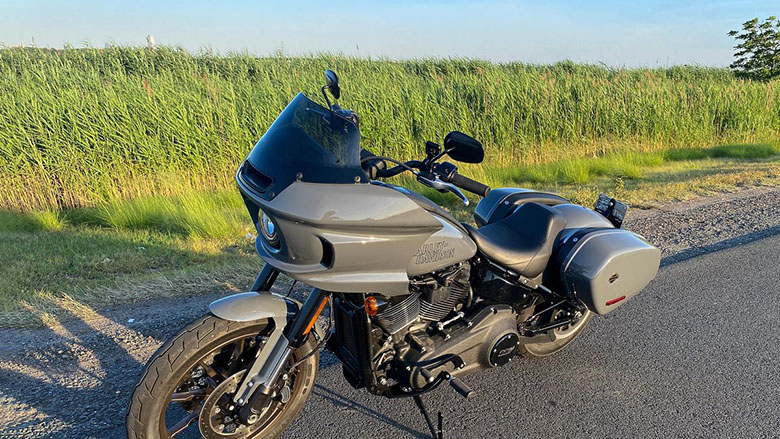
Engine
Like the FXLR S, the 117ci Milwaukee-Eight, H-D’s biggest production engine, powers the Low Rider ST. Power is delivered smoothly yet instantly. The torque curve starts at idle and rises straight up, as the Cycle World dyno chart demonstrates. The M-8 generates more than 100 pound-feet of torque throughout almost the full range of valuable revs, peaking at 114.79 pound-feet at 3,470 rpm. This power is spotless and useable, considering no riding settings or traction control. The rider has excellent control at slow speeds because of the ramp-up’s steady ascent that follows the movement of the throttle.
Drive Train The high degree of control is also a result of the fine throttle and clutch feel, which we have come to anticipate from Harley-Davidson. But plenty of power is available because of the high torque at such a low engine rpm. Both taking off slowly and smoothly and grabbing a fistful of throttle to spin the tire at will are simple.
Riding Style
To lock the rider in during strong launches, the leather solo seat of the ST is steeply backed, and it works effectively. It’s an essential component of the West Coast look Harley-Davidson is going for, but it’s also comfortable thanks to plenty of cushioning and a practical design. The manufacturer offers footpegs and a passenger seat.
Instrumentation The ST’s instrumentation comprises a tiny digital “tech gauge” that is built into the top clamp of the handlebar riser. It maintains the handlebars clear and uncluttered. Although the display is correctly set out, it isn’t very bright, making it difficult to see in broad sunlight or through a tinted helmet visor.
I questioned Lead Designer Dais Nagao about if there were any plans to include a touchscreen display or extra comfort elements that are generally seen on complete touring bikes, and he said that H-D did not feel the ST consumer wanted such characteristics. But because this bike straddles the cruiser-bagger divide, I anticipate preferences will be divided. Riders on cruisers needing storage and wind protection will appreciate that nothing has been crowded. Bagger enthusiasts looking for a lighter platform may tickle their itch by adding aftermarket parts, but this isn’t the same as having these qualities built in from the factory.
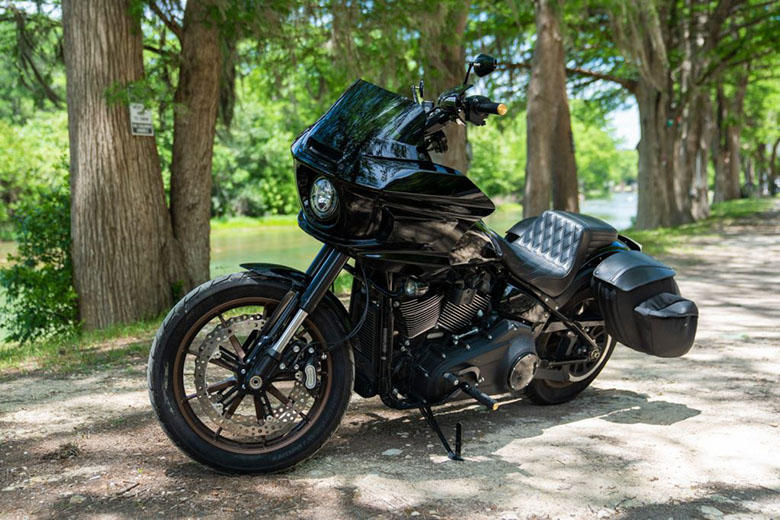
Electronics
To create a sound system that suits the ST’s fairing, H-D collaborated with Rockford Fossae. Except that it was accessible right away at the time of introduction, it’s difficult to understand how the factory’s participation in its development enhances the product without handlebar-mounted media controls or any indication of what you’re listening to. Riders who use the technology will still need to acquire an aftermarket Bluetooth controller or manage their music on their phone.
Clamshell saddlebags from the Soft ail Sport Glide are positioned high over the exhaust. This mounting position guarantees they won’t impact lean angle and aids in creating a robust and intimidating appearance. They individually lock with a key and provide a combined storage space of 1.9 cubic feet. The bags must be opened to be removed. However, this can be done quite fast. In less than 20 seconds, I pulled both bags off the bike.
According to Paul Weiss, engineering manager at Harley-Davidson, the ST was intended to ride similarly to the Low Rider S. I dare think it depends even more effectively. The sole difference between this bike and that bike, apart from the saddlebags and fairing, is a single-rate spring in the ST’s fork instead of a triple-rate spring on the S. On the S, we encountered a considerable fork dip while braking hard, but this issue was resolved without a comfort penalty thanks to the ST’s fork’s more robust spring rate.
Geometry
The S and ST’s chassis geometry is the same. Therefore, these two motorcycles handle pretty similarly. While forcing the bike into a corner, the ST’s additional 50 pounds may be felt, although it is not noticeable. A more stable road feel is produced by the fork’s firmer spring rate, which better balances the chassis fore and aft while entering and exiting corners.
H-D is known for reusing names, but when do we start referring to an apple as an orange? Yes, the Low Rider ST developed from the Low Rider S, but it has moved on from the characteristics that made the Low Rider model unique. It’s simple to wonder what a name implies, but a Low Rider doesn’t match since it has the highest suspension in the Soft ail family.
Weight at 719 pounds when ready to ride, the Low Rider ST weighs 50 pounds more than the Low Rider S. While the S and ST’s horsepower and torque figures were almost equal, there was a tiny discrepancy in acceleration and braking tests due to weight and aerodynamic considerations. The ST stopped from 60 mph at 137.36 feet instead of 135.21 on the lighter model. It also accelerated from 0 to 100 mph in 10.32 seconds as opposed to 9.6 on the S. Nevertheless, throughout testing, neither bike felt appreciably quicker than the other.
Other Features
The Low Rider ST from 2023 updates the tried-and-true Low Rider S design with vintage aesthetics, wind protection, and storage. These modifications improve rider convenience and long-distance performance while modernizing the look as consumers have requested. It’s a bike that has a very modern feel to it. With this model, Harley-Davidson, a business that strives to strike an ideal balance between tradition and performance, has succeeded.

2023 Harley-Davidson Low Rider ST Cruisers – Price
The new 2023 Harley-Davidson Low Rider ST Cruisers are available at $21,749 to $22,199 only.
2023 Harley-Davidson Low Rider ST Cruisers – Technical Specifications
Dimensions
| Length | 93.1 in. |
| Seat Height, Laden | 27 in. |
| Ground Clearance | 5.9 in. |
| Rake | 28 |
| Trail | 5.7 in. |
| Wheelbase | 63.6 in. |
| Tires, Front Specification | 110/90B19,62H,BW |
| Tires, Rear Specification | 180/70B16,77H,BW |
| Tire, Type | Michelin Scorcher “31” front and rear |
| Fuel Capacity | Five gal. |
| Oil Capacity (W/Filter) | Five qt. |
| Weight, As Shipped | 694 lb. |
| Weight, In Running Order | 721 lb. |
| Luggage Capacity -Volume | 1.9 cu ft |
Engine
| Engine | Milwaukee-Eight 117 |
| Bore | 4.075 in. |
| Stroke | 4.5 in. |
| Displacement | 117 cu in |
| Compression Ratio | 10.2:1 |
| Fuel System | Electronic Sequential Port Fuel Injection (ESPFI) |
| Exhaust | 2-into-2 offset shotgun; catalyst in muffler |
Performance
| Engine torque testing method | J1349 |
| Engine Torque | 125 ft-lb |
| Engine Torque (RPM) | 3500 |
| Lean Angle, Right (DEG.) | 31.3 |
| Lean Angle, Left (DEG.) | 31.3 |
| Fuel Economy Testing Method | Estimated City/Hwy |
| Fuel Economy | 47 mpg |
Drive train
| Primary drive | Chain, 34/46 ratio |
| Gear Ratios (Overall) 1st | 9.311 |
| Gear Ratios (Overall) 2nd | 6.454 |
| Gear Ratios (Overall) 3rd | 4.793 |
| Gear Ratios (Overall) 4th | 3.882 |
| Gear Ratios (Overall) 5th | 3.307 |
| Gear Ratios (Overall) 6th | 2.79 |
Chassis
| Front fork | Single cartridge 43 mm inverted with aluminum fork triple clamps; single rate spring. |
| Rear Shocks | Hidden, free piston, coil-over monoshock; 56 mm stroke; hydraulic preload adjustment |
| Wheels, Front Type | Dark bronze, Radiate cast aluminum wheel |
| Wheels, Rear Type | Dark bronze, Radiate cast aluminum wheel |
| Brakes, Type | Front and rear black, Split 7-spoke floating rotors |
| Brakes, Caliper Type | 4-piston fixed front and 2-piston floating rear |
Electric
| Lights (as per country regulation), headlamp, tail/stop/front signal lights | All LED, low beam, high beam, and signature position lamps, LED Zeppelin tail lamps, Incandescent bullet turn signals |
| Gauges | 2.14-inch viewable area LCD with speedometer, gear, odometer, fuel level, clock, trip, range, and tachometer indication |

